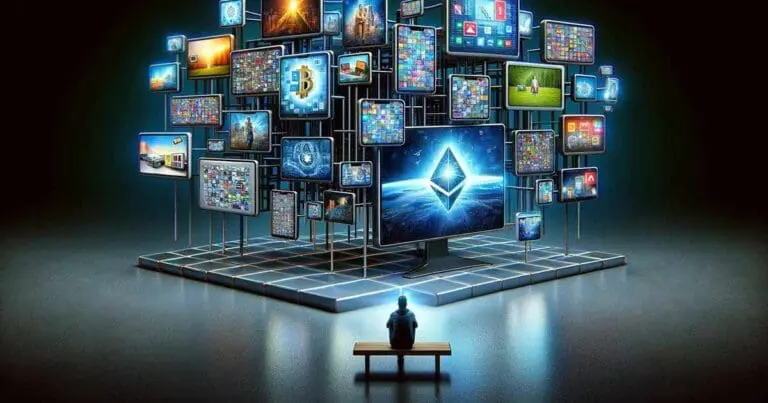Reinventing Recreation: The Rise of Autonomous Robotics

Recreational robotics have transformed entertainment, hobbies, and leisure activities, blending advanced technologies with engaging features.
These autonomous systems create enjoyable experiences for users of all ages, merging the practical with the playful in innovative ways.
This synergy has led to fascinating growth in areas such as educational toys, companionship robots, and even sports enhancers, illustrating the vast potential of autonomous robots in our daily lives.
What are autonomous robots?
Autonomous robots operate with a degree of independence, performing tasks without human control or intervention. These robotic systems are equipped with control systems that enable decision-making, utilizing artificial intelligence (AI) and machine learning to adapt to new situations, thereby efficiently executing complex and repetitive tasks.
Their ability to interact with the environment, often through environmental sensors and neural networks, marks a significant advancement over traditional industrial robots.
7 examples of recreational robotics
- Consumer drones
- Educational robots
- Pet robots
- Robotic toys
- Sports and fitness robots
- Art and performance robots
- Home entertainment robots
1. Consumer drones
The DJI Mavic and Phantom series exemplify the intersection of aerial vehicles and leisure, offering advanced photography and videography capabilities for hobbyists and professionals alike.
While some level of human interaction is necessary, these semi-autonomous vehicles leverage artificial intelligence and environmental sensors to navigate and capture stunning visuals, enhancing the user experience in outdoor activities.
Integrating such sophisticated technology allows users to explore and document the world from unique perspectives, making these drones popular tools for adventures and creative projects.
2. Educational robots
LEGO Mindstorms and Sphero Balls represent the pinnacle of engaging and educational robotics. They introduce both children and adults to the fundamentals of robotics and coding in an interactive way.
Through the combination of hands-on experience and playful learning, these devices educate and can inspire a deeper understanding of technological systems and machine learning concepts.
This innovative approach promotes critical thinking, creativity, and problem-solving skills, crucial competencies in the digital age.
3. Pet robots
Sony AIBO and Lovot are at the forefront of providing companionship through autonomous robots.
These pet robots offer emotional comfort and interaction without the demands of living pets, showcasing advancements in artificial intelligence to recognize and respond to human cues.
Their ability to learn and adapt to their owners’ preferences and moods exemplifies the personalization capabilities of modern robotic technology.
4. Robotic toys
Anki’s Cozmo and Vector, alongside UBTECH’s programmable humanoid robots, vividly demonstrate the role of robotic toys in enriching personal play and advancing STEM (Science, Technology, Engineering, and Mathematics) education.
These robots captivate users through their distinctive personalities and a broad range of capabilities, underpinned by advanced control systems and the application of machine learning.
Their interactive nature and educational programming opportunities underscore the significant potential of humanoid robots as engaging, educational tools in various learning environments.
5. Sports and fitness robots
Robotic exoskeletons and table tennis robots epitomize the integration of autonomous robotics into sports and fitness, transforming training sessions into more interactive and personalized experiences.
While these technological innovations haven’t made it to the mainstream yet, they have the potential to make physical activity more engaging and greatly improve accessibility for individuals looking to elevate their performance or undergo rehabilitation.
Through these applications, robotic systems are proving instrumental in enhancing human capabilities and the effectiveness of fitness routines.
6. Art and performance robots
TeamLab’s installations and dancing drones effortlessly merge art, performance, and technology, creating immersive experiences that captivate audiences worldwide.
This integration of autonomous mobile robots with creative expression showcases the expanding boundaries of robotic systems in entertainment.
The fusion of technology with artistic vision propels traditional performances into a new era, where interaction and spectator involvement reach unprecedented levels.
7. Home entertainment robots
Jibo and Keecker are revolutionizing the concept of home entertainment by delivering highly personalized interactions and media experiences directly to users in the comfort of their homes.
With the integration of AI and deep learning technologies, these robotics are proficient in adapting to individual household floor plans and recognizing user preferences.
This evolution signifies a dramatic shift in home entertainment systems towards forms that are more interactive, intuitive, and responsive to the needs and habits of their users.
Driving forces behind autonomous robot innovation
The driving forces behind autonomous robot innovation include engineers, designers, programmers, and other interdisciplinary roles.
Engineers for autonomous robot innovation
Engineers play a crucial role in the development of autonomous robots, designing robotic systems capable of navigating and interacting with the physical world.
Their expertise in control systems, environmental sensors, and physical tasks is essential for creating robots with high intelligence and autonomy.
Their innovative designs and problem-solving skills are pivotal in advancing robotic capabilities, pushing the boundaries of what these autonomous systems can achieve in various sectors.
UX designers for autonomous robot innovation
Designers are intimately involved in shaping the appeal and usability of autonomous robots, paying special attention to the critical aspect of human-robot interaction.
Through their creative efforts, they ensure that robots are not only highly functional but also accessible and enjoyable for all users, weaving human emotions and preferences into the very fabric of the design.
This focus on empathy and user experience helps bridge the gap between complex robotics technology and everyday human needs, making advanced robotics more approachable and engaging for a wider audience.
Programmers for autonomous robot innovation
Programmers are the backbone of the intelligence in autonomous robots, writing code that enables machine learning, neural networks, and adaptive behavior.
Their skills in software development allow robots to perform complex tasks autonomously, without constant human intervention.
This intricate coding is crucial for the evolution of robots, equipping them with the ability to learn from experiences and improve their interactions with the human world.
Interdisciplinary roles for autonomous robot innovation
The interdisciplinary approach, combining robotics, AI, software development, and creative design, is pivotal in propelling innovation in recreational robotics.
This collaboration is indispensable for creating autonomous systems that are versatile and engaging and adept at enriching human experiences across a myriad of domains.
It underscores the importance of harmonizing technical proficiency with creative ingenuity to forge robots that elevate our daily lives and leisure.
Future predictions for recreational robotics
Future predictions for recreational robotics includes the continued evolution of recreational robotics, finding new areas of application, and new technological advancements.
Evolution of recreational robotics
The evolution of recreational robotics is poised to introduce more advanced, interactive, and personalized robots, transforming how we engage with technology in our leisure time.
Predictions include robots with enhanced artificial intelligence, capable of more nuanced interactions, recognizing and adapting to the individual user’s preferences and emotions.
These technological advancements will enable robots to learn from their environments and offer tailored entertainment and educational experiences, marking a significant leap in how we experience personal and recreational robotics.
New areas of application
Potential new areas of application for recreational robotics include adaptive robots for personalized learning, providing a custom-tailored educational experience to each user.
Aerial robots for immersive gaming experiences could transform outdoor spaces into engaging, dynamic arenas, blurring the lines between video games and physical activity.
Lastly, the advancement of soft robots promises safer, more interactive play by mimicking natural movements and enabling close human-robot interaction.
Technological advancements
Technological advancements in deep learning, neural networks, and environmental sensors are set to significantly influence the development of recreational robots, allowing them to interpret and respond to human emotions and preferences more accurately.
These improvements will considerably elevate the quality of human-robot interactions, fostering a deeper, more meaningful connection.
Consequently, robots will become increasingly central to leisure and entertainment, seamlessly integrating into our daily lives and bringing a new dimension to personal enjoyment.
Innovating recreation with autonomous robotics
The exciting developments in recreational robotics showcase the incredible potential of blending fun, learning, and innovation.
These autonomous robots represent a leap forward in how we engage with technology, transforming traditional activities into dynamic, interactive experiences.
As the field continues to grow, there is an encouraging invitation for readers to explore and engage with the world of recreational robots, a testament to the ever-evolving relationship between humans and machines.
This engagement not only highlights the technological advancements but also fosters a deeper understanding and appreciation of the symbiotic relationship we share with these intelligent systems.
Looking to hire top-tier Tech, Digital Marketing, or Creative Talent? We can help.
Every year, Mondo helps to fill over 2,000 open positions nationwide.
More Reading…
- Leveraging AI for System Integration & the Demand for AI Talent
- Leading with Empathy: The Key to Effective Remote Leadership
- Embracing the 32-Hour Work Week & Talent Retention
- The Ripple Effects of Meta’s AI Hiring Blitz on the Tech Job Market
- AI You Didn’t Realize Your Organization Is Already Using
- The Latest Innovations in Health and Wellness Technology
- Green Tech: 5 Sustainability Innovations in the Tech Sector
- Quantifying a Project Manager’s Success to Advocate for Hiring
- Breaking the Code: How Women are Shaping the Future of Cybersecurity
- The Rise of AI Majors: Transforming the US Job Market
- Tips to Leverage Your Onboarding Process for Employee Retention
- 10 Tech Jobs That Saw the Highest Salary Growth This Year
- Highest Paid Data Science Roles & Top Salaries



